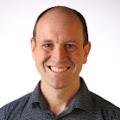By Tom Gordon
Last year, I organised a school community to do something amazing. I organised over 200 people to participate in and break a world record, do some fundraising for the school community, have a fun night out and do some astronomy! Amazing on all counts!
The event was a part of a world record attempt run by Dr Brad Tucker and the people at Mt Stromlo for the most people stargazing at one time across different locations.
We smashed it by the way! A total of 7960 participants . 114 of those contributed by me and the wonderful people of my kids’ school community! A small but very important contribution.
This event was one of my highlights from last year and from that success, I’ve been asked to do it again, and I’m really considering it! The was so much happening on the night, we had dinner prepared by the Parent & Citizens to raise some money for the school, We had 2 lectures by our resident Scientist in School about astronomy & planets, we had a couple of episodes of COSMOS by Neil DeGrasse Tyson playing, we had a Starlab (a mobile planetarium) and of course the main event, a world record attempt at stargazing. To complete the night, a few families even stayed back on the school grounds and had a campout! Wonderful! It was a to to pack into a few hours and it was a lot of fun!
Some highlights included:
- Breaking the world record!
- The parting of the clouds right when we needed to start our times world record attempt. The sky was very cloudy for the entire night but right 8:30 when the 10 minute viewing window was happening, the clouds parted to reveal the moon and a single star. I couldn’t place the star as there was no other star available to locate it, but it was pretty bright so it might have been Sirius.
- The talks and the Starlab. Such a hit and a great intro into some really exciting astronomy.
- Getting a call from an amateur astronomy group the day before asking if he could bring their 16” Dobsonian. My answer was yes, and Wow! It was a huge telescope!
- Getting to talk to over 200 students and parents for more than 3 hours about. astronomy, planets, stars, galaxies, the big bang etc. I love talking about this stuff, and on this occasion, and to this day, everyone wanted to join in.
- After the event, I calculated that the viewing area of all the telescopes that we had on the night, was more than double the size of the Hubble Space Telescope.
The coolest part of the event though, was when I did the countdown to 8:30, our start time. I counted down from 10 and in between numbers 7 and 6, I thought to myself, "I've just organised for over 200 people to do something science-y that they would normally never do, all at once, ON PURPOSE!" Such a great moment. I could barely contain my excitement! I was like a little kid with a telescope looking up at the moon and the stars for the first time.
Apart from smashing the world record, the stargazing night was a huge win for astronomy communication and science. People will remember this night for a long time, and a few of the students will remember the excitement when they’re about 15 and deciding which subjects they want to do in school. A huge number of students are now more comfortable talking about astronomy and still use their small telescope to look at the stars in their own time. For pure levels of engagement, I don’t think I’ve been a part of, or helped organise a more successful single science communication event. I encourage everyone to host a viewing night for a school, community, group of friends, local amateur astronomy society etc. A viewing night is a great example of astronomy communication at its best. If you need help, I can let you know more about how we did it. When you do run your own event, let me know, I’ll do what I can to join you!
I am officially inviting and challenging everyone to break our world record. It’ll be really tough to do, but I’d love to see you try!
 Tom Gordon is a science communicator at the School of Physics. His role is to provide and develop outreach programs to, mainly, High school students in order to assist them with their studies, provide mentors and information about University life and expectations. In addition, he runs many other School and holiday programs such as Gifted and Talented workshops and he is the Chair of the School of Physics outreach committee.
Tom Gordon is a science communicator at the School of Physics. His role is to provide and develop outreach programs to, mainly, High school students in order to assist them with their studies, provide mentors and information about University life and expectations. In addition, he runs many other School and holiday programs such as Gifted and Talented workshops and he is the Chair of the School of Physics outreach committee.
He did a degree in Astronomy and Astrophysics as well as a Graduate Diploma in Science Communication at the ANU, then a Masters Degree in Space Studies in France. After returning to Australia he was a High School teacher for 4 years in Sydney, and a stint at the National Measurement Institute as a legal metrology policy officer.His role also extends to media enquiries and publications, as well as in-reach to current university students as well as Science Teachers workshops and forums.
In his spare time he is on the executive of the Parents and Citizens committee at his daughters' school and he has also become involved and very interested in the Australian Political process by joining and being active in a minor political party.







